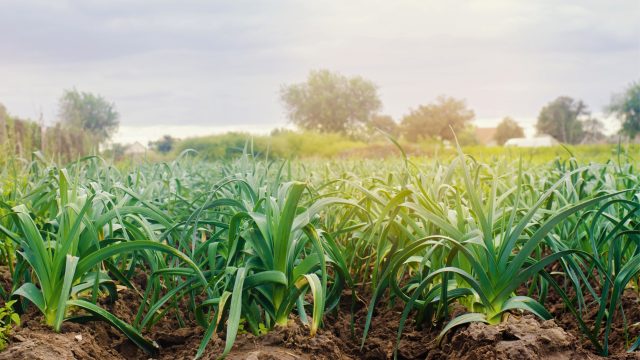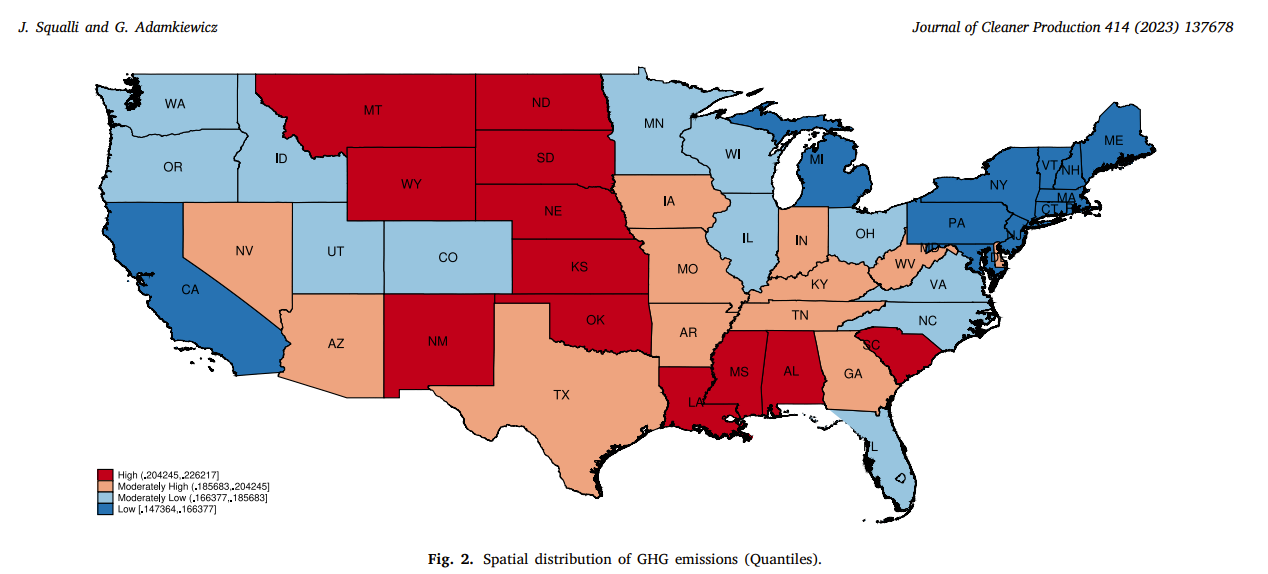13
Mar
Study Shows Organic Agriculture Mitigates Climate Crisis in Contrast to Conventional Agriculture

(Beyond Pesticides, March 13, 2024) A comprehensive study released in Journal of Cleaner Production in August 2023 identifies the potential for organic agriculture to mitigate the impacts of agricultural greenhouse gas (GHG) emissions in the fight to address the climate crisis. In “The spatial distribution of agricultural emissions in the United States: The role of organic farming in mitigating climate change,” the authors determine that “a one percent increase in total farmland results in a 0.13 percent increase in GHG emissions, while a one percent increase in organic cropland and pasture leads to a decrease in emissions by about 0.06 percent and 0.007 percent, respectively.” This descriptive study affirms the urgency of Beyond Pesticides’ mission to ban toxic petrochemical pesticides by 2032, given the projected adverse impacts that conventional agricultural dependence on these toxic pesticides will continue to have on people, wildlife, and ecosystems.
The study refers to various studies focused on a comparative analysis of conventional to organic farming on energy use, greenhouse gas emissions (GHGe), nutrient leaching, soil quality, and biodiversity. The consensus is that organic farming is more sustainable than conventional agriculture. For example, “[S]everal studies comparing conventional to organic agriculture found that the latter used 10%–70% less energy per unit of land for all analyzed crops.” However, measurements on a meta-analysis of soil quality and biodiversity show “significant variability across studies with 16% of them showing a negative effect of organic farming on species richness.” Drawing on this past research, the authors of this study accomplish what the previous research could not: “provide categorical supporting evidence… for the general expectation that organic farming is more environmentally sustainable than conventional farming.”
These researchers used U.S. state-level data from 1997 to 2010, excluding the years 1998, 1999, and 2009 due to bad data. Additionally, researchers drew GHGe data from the World Resources Institute, economic data (e.g. “real per capita GDP (in chained 2009 dollars), output share for utilities, manufacturing, oil and natural gas, and transportation” as a percentage of state GDP) from the U.S. Bureau of Economic Analysis, Department of Commerce. Additional data was gathered from the U.S. Department of Transportation’s Federal Highway Administration, the U.S. Department of Agriculture’s Economic Research Service, and the U.S. Census Bureau.
To determine a statistical relationship between GHGe and organic farming in the U.S., the researchers use a model based on the STIRPAT (Stochastic Regression on Population, Affluence, and Technology) approach. Researchers summarize the benefits of this analytical method, “Given the importance of transportation to farming, this would help examine whether the potential environmental benefits of organic food production, if any, are substantial enough to outweigh the environmental harm of transportation output embodied in organic farming.”  See Subsection 3.2 under Methods for a full breakdown of the empirical specifications of their methodology.

The spatial distribution (as seen above in Figure 2) of the statistical comparison between conventional and organic agricultural across all fifty states amounts to three overarching findings:
- “The spatial distribution of agricultural GHG emissions in the United States is uneven: High-emissions states are concentrated in the Great Plains extending south to NM and the southeastern area of the United States. Meanwhile, low-emissions states are in California and the northeastern region extending to MI in the north and MD in the south.
- Agriculture is a significant contributor to GDP within the high-emissions states, but organic agriculture represents only a small proportion of total farmland: The contribution of agriculture to GDP in high-emissions Great Plains states ranges from 1.11% to 5.94%, while organic agriculture as a share of total farmland ranges from 0.02% to 0.33%. In the southeastern states, the contribution of agriculture to GDP ranges from 0.39% to 1.41%, and organic agriculture ranges from 0.003% to 0.005%.
- Agriculture has a substantially lower contribution to GDP within low-emissions states, but organic agriculture represents a large proportion of total farmland: The contribution of agriculture to GDP ranges from 0.063% to 0.95%, while organic farming as a share of total farmland ranges from 0.14% to 3.13%.”
Years of reporting by Beyond Pesticides corroborates the findings in the study that organic agriculture is a monitorable and critical solution to address cascading crises relating to climate change and public health. Rodale Institute’s Farming Systems Trial – 40-Year Report highlights the success of regenerative organic agriculture:
- Organic systems achieve 3–6 times the profit of conventional production;
- Yields for the organic approach are competitive with those of conventional systems (after a five-year transition period);
- Organic yields during stressful drought periods are 40% higher than conventional yields;
- Organic systems leach no toxic compounds into nearby waterways (unlike pesticide-intensive conventional farming)
- Organic systems use 45% less energy than conventional agriculture, and
- Organic systems emit 40% less carbon into the atmosphere.
There are also numerous reports that highlight the threat of toxic petrochemical pesticides and fertilizers to the broader climate crisis. For example, a 2020 study documents the use of synthetic fertilizers as a driver of nitrous oxide (N2O) emissions. This phenomenon is of critical concern to advocates given that, “Growth in nitrous oxide emissions over these last four decades has been considerable, with human-caused release, mostly from fertilizer use on cropland, increasing by 30%. Compared to pre-industrial levels, nitrous oxide levels increased 20% from all sources.” While nitrous oxide emissions only make up 6 percent of total greenhouse gas emissions in the U.S., “the impact of one pound of N2O on warming the atmosphere is 265 times that of one pound of carbon dioxide.” In Sub-Saharan Africa, meanwhile, years of soaring fertilizer costs (for both organic and conventional products) that began with the pandemic and continue with currency fluctuations wracked by geopolitical actions, including the Russia-Ukraine War, prevent many farmers from maintaining soil health to produce agricultural products. The climate crisis is also causing significant harm to bumblebees, according to a 2023 study that adds to research tying together the compounding impacts of extreme temperature fluctuations and toxic insecticide exposure in relation to their physical fitness and pollinating capabilities.
Beyond Pesticides strongly advocates for strengthening organic regulations to ensure the positive impact of organic principles in addressing the compounding ecological, public health, and climate crises. See Keeping Organic Strong as the National Organic Standards Board to find the opportunity to suggest changes to the National Organic Program through public hearings, comment periods, and written testimonials that will open up in April.
All unattributed positions and opinions in this piece are those of Beyond Pesticides.Â
Source:Â Journal of Cleaner Production










